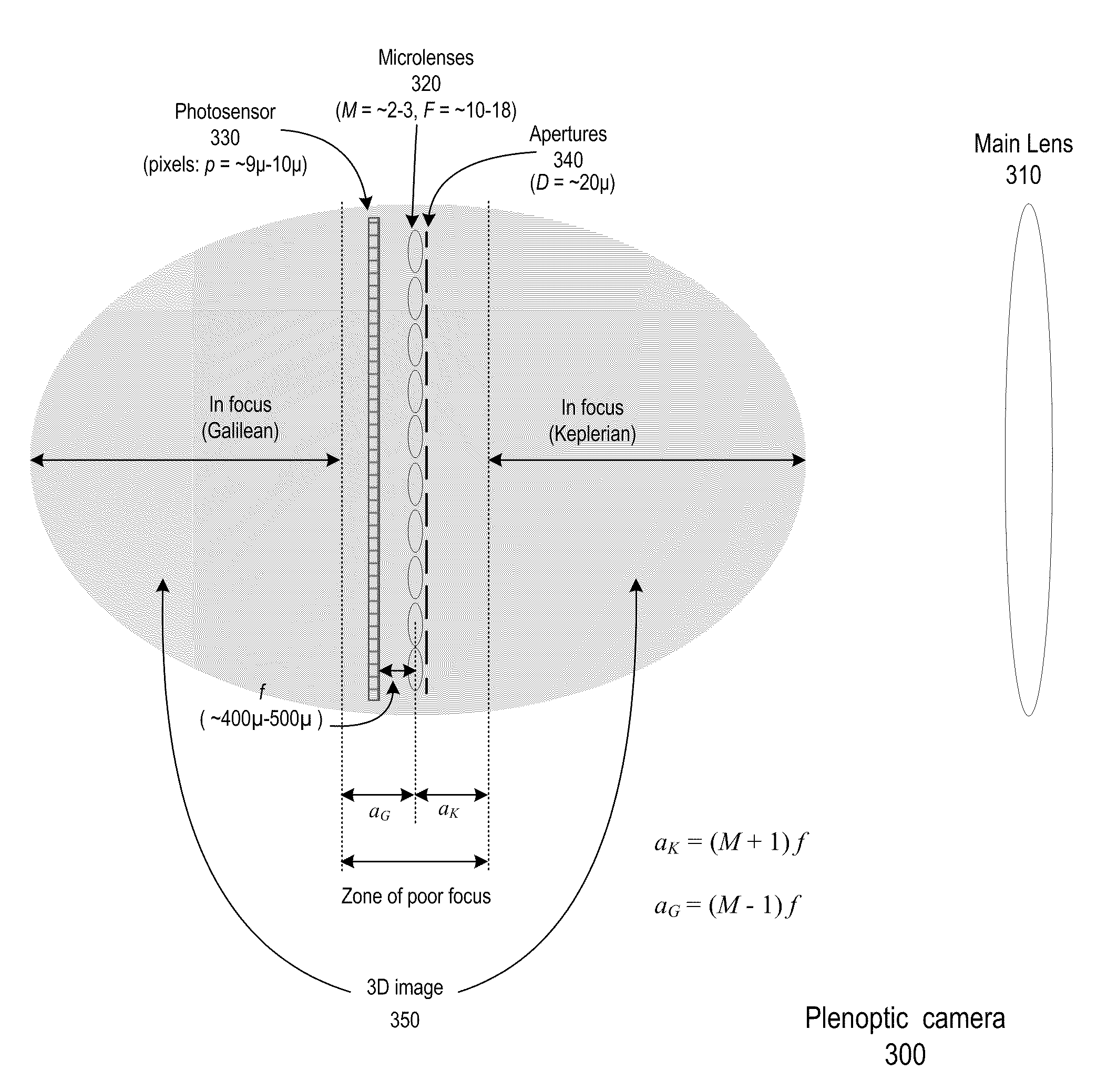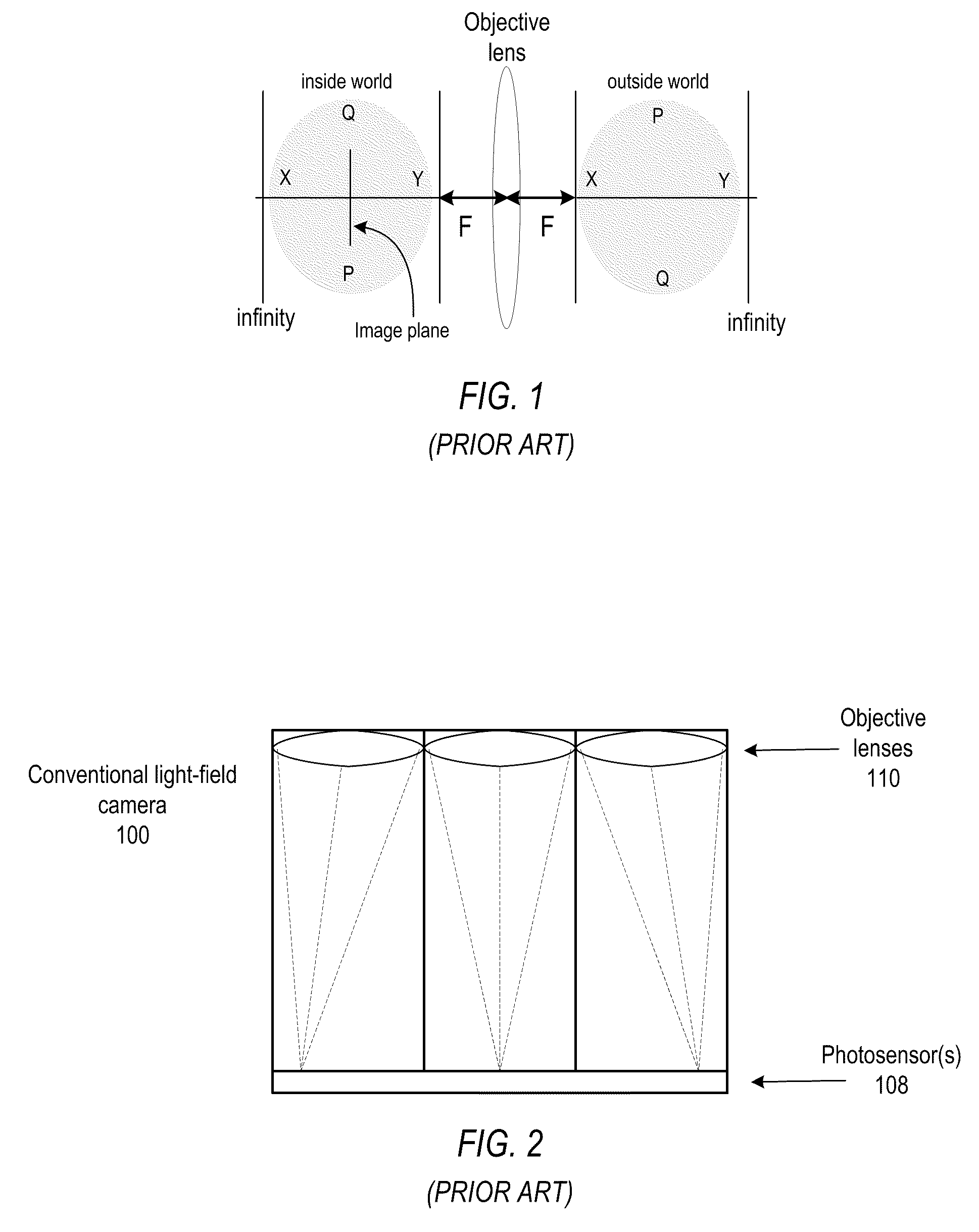Plenoptic camera with large depth of field
- Summary
- Abstract
- Description
- Claims
- Application Information
AI Technical Summary
Benefits of technology
Problems solved by technology
Method used
Image
Examples
example results
[0096]FIGS. 13 through 16 show example images or portions of images captured with an embodiment of the plenoptic camera as described above. FIG. 13 shows a crossed eye stereo view. Two stereo views of a captured scene may be generated, as illustrated in FIG. 13. The plenoptic camera is synthetically focused on the “Fluid Dynamics” book. The stereo views may be synthetically generated (and synthetically focused) from the main image inside the plenoptic camera, observed through the microlens array. In this particular case, the “Optical System” book is mapped behind the microlenses as a virtual image, and is observed in Galilean mode. In FIG. 13, the sharp imaging of the plenoptic camera system due to the large depth of field may be observed.
[0097]In capturing the example images of FIGS. 13 through 16, the plenoptic camera was physically focused exactly on the text at the top of the “EG” book. This means that the main image of this area falls in the zone of poor focus within 1.5-2 mm f...
PUM
 Login to View More
Login to View More Abstract
Description
Claims
Application Information
 Login to View More
Login to View More - R&D
- Intellectual Property
- Life Sciences
- Materials
- Tech Scout
- Unparalleled Data Quality
- Higher Quality Content
- 60% Fewer Hallucinations
Browse by: Latest US Patents, China's latest patents, Technical Efficacy Thesaurus, Application Domain, Technology Topic, Popular Technical Reports.
© 2025 PatSnap. All rights reserved.Legal|Privacy policy|Modern Slavery Act Transparency Statement|Sitemap|About US| Contact US: help@patsnap.com



